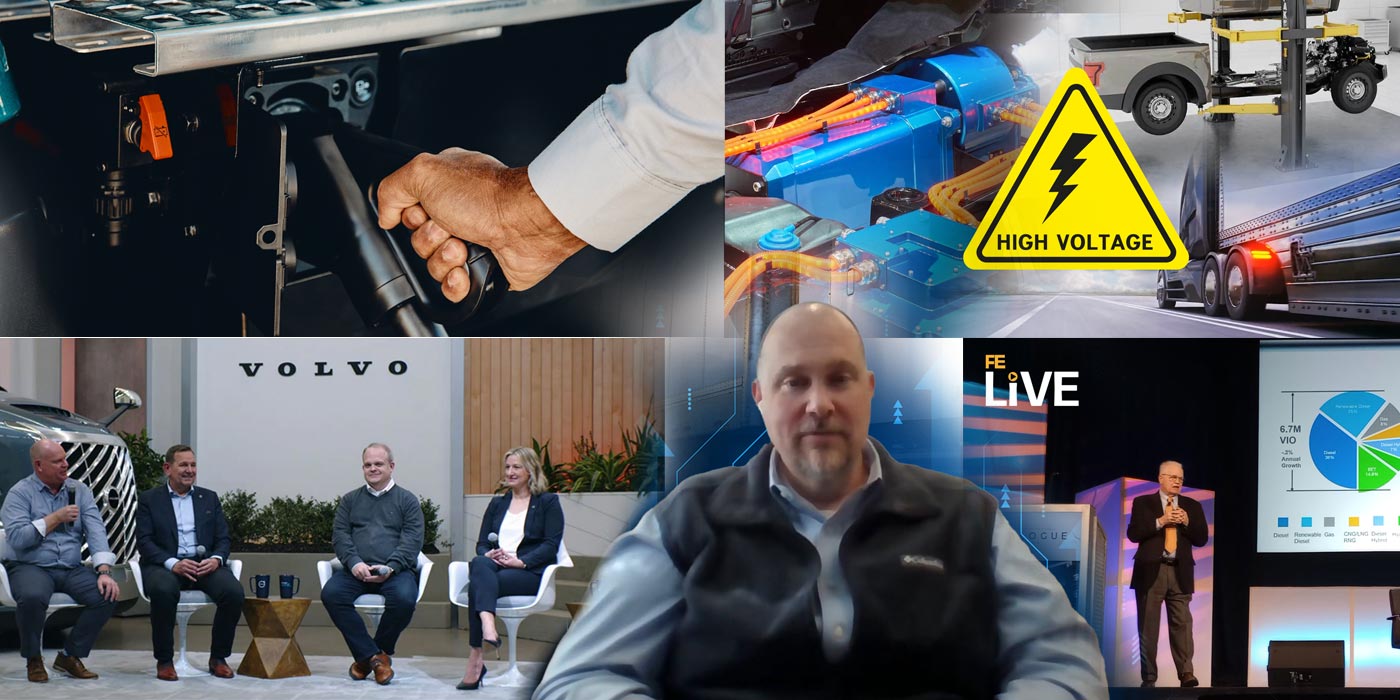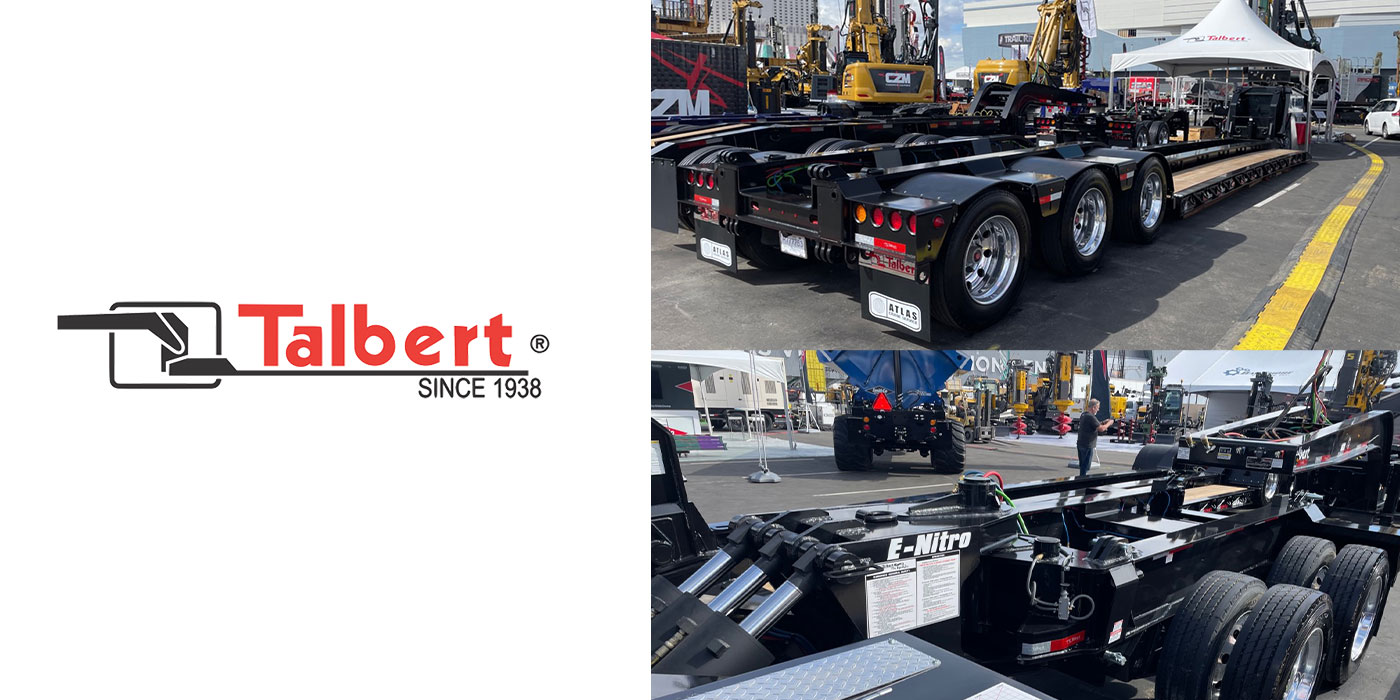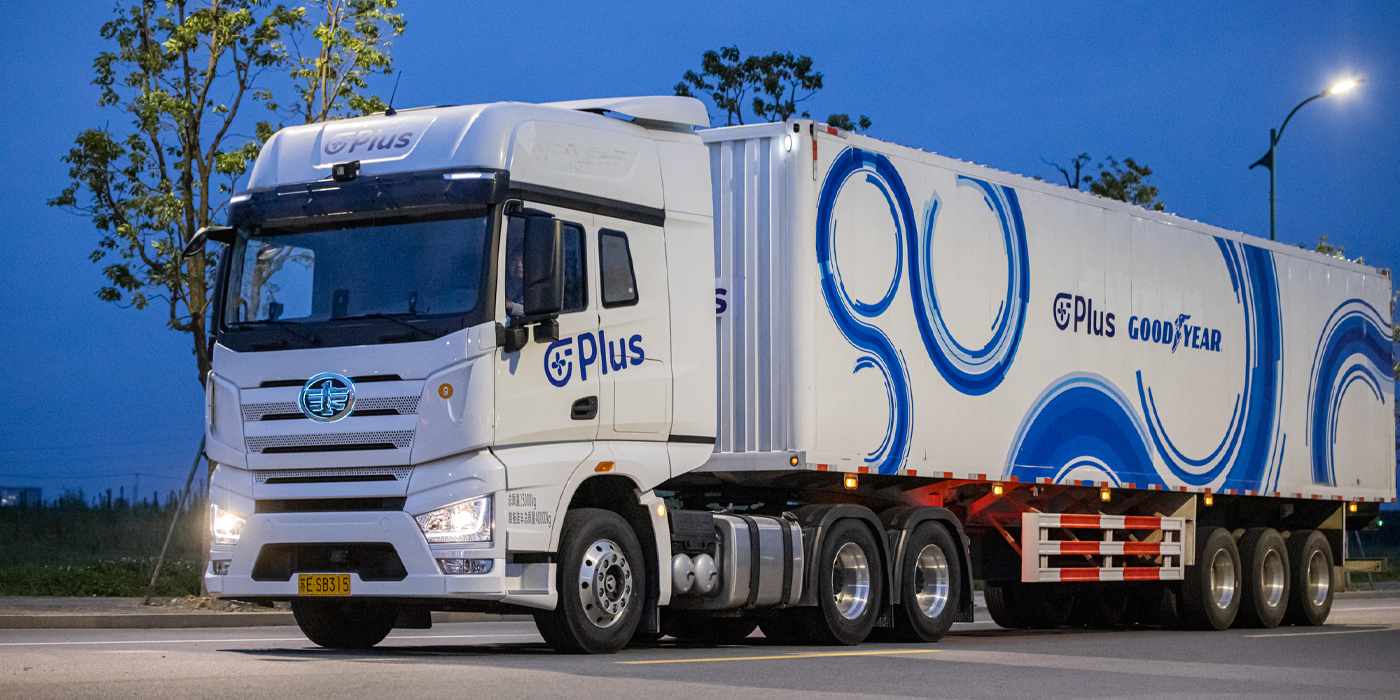Time was when fleets wrote detailed specifications for over-the-road power units but purchased medium-duty trucks that were spec’d by a truck salesman or put together by a body builder on a chassis delivered by a preferred OEM. 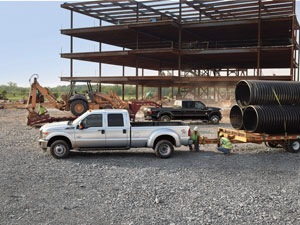
This was true for highway tractors even after several heavy-duty truck manufacturers tried their best to greatly limit options offered to buyers. Managers of such fleets demanded, and usually got, what they believed worked best in their operation. And, because most over-the-road operations are similar in nature, well-maintained, upscale highway tractors have always commanded a good price in secondary markets.
Until rather recently, however, most fleet managers were either unable or unwilling to do the kind of analysis required to put together detailed specs for medium-duty power units. This was often the result of the belief, frequently justified, that a “plain jane” truck would serve the fleet as well as something demanding a higher price tag.
Paul Wachter, president of Taylor & Martin Inc., one of the country’s largest truck auction companies, said about delivery vehicles, “In general, creature comforts are minimal because their trucks are not designed to have a driver in them all day long. Drivers are in and out of them on a regular basis all day long. Engine sizes are tied almost exclusively to the type of work for which the truck was originally specified. A city delivery operation simply does not require a high horsepower vehicle. Fleet managers in such operations typically specify down rather than up.”
Penske sells about 8,000 medium-duty trucks annually that are either coming off lease or out of its rental fleet. It seems only reasonable that the company is retiring trucks with relatively popular specifications, weighted, of course, toward the lighter weight classes because of its rental operation. Jack Mitchell, vice president of remarketing for the company said, “Half to 60% of the units in any given year are non-CDL automatics. That’s the most popular vehicle we sell. As far as engines go, horsepower is something like to 185 to 225. Most of our rental trucks have lift gates on them. These are platform lift gates that are larger than standard. They all have logistics tracks inside the box and translucent roofs. 24- to 26-ft. boxes are most popular. Most have side doors and bench seats. All, of course, are air conditioned.”
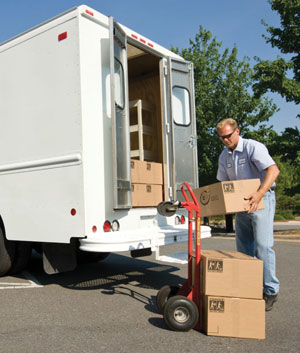
Specialized work trucks
This certainly is not true for fleets needing highly specialized trucks. Consider, for example, utility companies with their need for digger-derricks, outriggers and bucket trucks. As Darry Stuart, president and CEO of DWS Fleet Management Services, said, “In most cases, people who spec utility vehicles are a step above many other fleet managers because they know what they need and what specs are necessary to provide a long service life.”
Wachter said, “If a truck is going to be used on- and off-highway, for example, in aerial construction with bucket trucks, you’re going to see some big specs—heavier full locking rear ends and higher horsepower, big block engines ahead of multispeed transmissions. Such trucks are a lot more complicated. Those buyers are not nearly as price conscious as common midrange city delivery buyers are. They’re much more concerned about properly spec’ing the truck to avoid mechanical failures in the field.” While such highly focused specifications can make these trucks less desirable in the secondary market, they still can demand a good price, often entering the secondary market through specialized dealers.
Changing city specs
What might be called “standard specifications” will result in a medium-duty truck that will serve most operations satisfactorily. Stuart said, “There’s not too much in the way of original specs included with an eye for resale. Today, essentially all straight trucks are air conditioned and equipped with automatic transmissions behind engines in the neighborhood of 200 HP. Original specs often include things like rub rails to make them durable enough for the time fleets operate them. Such specs will serve 95% of all P&D applications.” 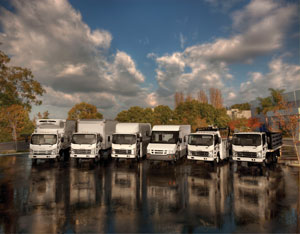
While many fleets involved in city delivery operations are still buying trucks off a lot, others have begun looking into medium-duty specs that will provide greater productivity, longevity and energy efficiency. Bob Johnson, director of fleet relations at the National Truck Equipment Association (NTEA), said, “Many fleets are paying more attention to drivetrain efficiency, that is, matching engines and transmissions to vehicle weights and duty cycles. One fleet I work with, simply from better specifications, was able to improve its fuel economy by 28%. This was a relatively high mileage fleet that delivers construction materials. They even wrote out their own shift schedule for the automatic transmissions. They also went with low rolling resistance tires and took weight out of their vehicles.”
Still addressing energy efficiency, Johnson mentioned that his organization also is seeing fleets paying increased attention to reducing excessive engine idling. He said fleets are addressing this problem using both improved driver training programs and the application of technological solutions like idle control devices.
The NTEA also has recorded an increased interest in the use of both compressed natural gas and propane for city fleets that have their trucks return to a home base every night where they can be fueled. Johnson said, “CNG has the edge in fuel economy and cost but comes with a very high cost for a fueling infrastructure. As far as cost goes, propane is about halfway between natural gas and diesel, but fueling infrastructure costs are very low, and market availability for propane is a lot better than for natural gas.” How will a dedicated alternate fueled truck be looked at in the secondary market when a fleet is ready to dispose of it? Likely quite favorably, since the interest in alternate fuel engines continues to grow by fleets in many vocations.
| Good Foundation |
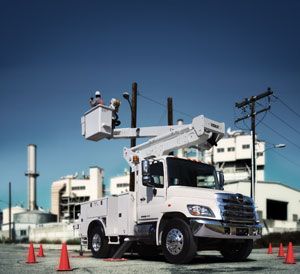 Building a work truck? Hino Trucks offers a 120,000 PSI frame, which the company notes is strong and stiff enough for the high torque loads utility bodies demand. The company goes on to say that the clean frame rails and under-step battery box and air tank make it easier (and more economical) for upfitters and body builders to meet special needs. Building a work truck? Hino Trucks offers a 120,000 PSI frame, which the company notes is strong and stiff enough for the high torque loads utility bodies demand. The company goes on to say that the clean frame rails and under-step battery box and air tank make it easier (and more economical) for upfitters and body builders to meet special needs.
Maneuverability is essential in the service/utility vocation, and Hino notes that the truck’s tight turning radius is yet another advantage that makes it perfect for urban environments. The 33,000-lb. GVW Hino 2013 model 338 features a Hino J08E series 8-liter diesel engine producing 260 HP and 660 lb./ft. of torque, which the truck maker states is an improvement over previous models. Standard equipment on the Hino 338 includes an Allison automatic transmission and an exhaust brake. Options for 2013 include a clean cab-to-axle and an Allison 2500 transmission with Shift Energy Management, along with a 14,000-lb. front axle, a front frame extension and a 120,000 PSI frame. According to the company, Hino medium-duty utility trucks, box trucks, dump trucks or Hino flatbed rollbacks offer a versatile solution for urban delivery, service, transport and towing operations that demand industry leading fuel economy and dependability, and reduced operating expenses. |
Other spec’ing goals
While a medium-duty truck built to “standard specs” will likely provide acceptable performance, fine tuned specifications might well deliver a more productive and longer-lived vehicle. Johnson said, “To improve vehicle longevity, we’re seeing a lot more interest in making sure that vehicles are not overloaded and that they are properly spec’d for the application. That will decrease maintenance costs over a lifetime. We’re also seeing a lot more interest in corrosion prevention in both bodies and electrical systems. Currently, we’ve noticed fleets are keeping their vehicles two to three years longer than they have some years ago.”
An increased use of onboard material handling equipment, along with low floors and lift gates that make loading and unloading cycles shorter, are increasing fleet productivity. There also is a growing use of telematics to decrease travel times in P&D applications.
The expected service life of a truck plays a critical role in the specs included for a new medium-duty truck purchase. Johnson said, “If I’m going to keep a truck for 10 years, I’m not going to worry about the value that truck will be or what people will be looking for 10 years from now. I’m going to be concerned with the productivity of that truck while I have it. Any specs I add to a truck to improve its resale value will be of negligible value 10 years from now. Trying to second guess the market 10 years from now is not going to be worth my time. At the same time, everything I do to make that truck last for 10 years will likely increase its resale value when it enters the secondary market. However, if I know that I’m going to keep it for only three years and then get rid of it, resale value would be a big concern. The shorter the time you’re going to keep a vehicle, the more important resale value becomes. The tipping point is a truck life of five to seven years.”
A “plain jane” truck, which is purchased off a dealer’s lot, will likely be less expensive than one specified for a particular application—even a routine city delivery application. But you need to decide if it will it offer the lowest cost of ownership over its lifetime?
Be sure to consider the value of detailed specifications—vehicle longevity, operational productivity and resale when it enters the secondary market.
Perfect fit, built for performance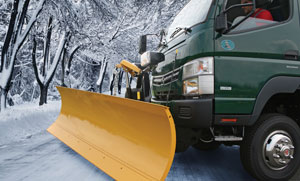
The Mitsubishi Fuso Canter FG4x4 work truck has been fitted with an optional snow plow. The Canter FG4X4 offers a 134.4-in. wheelbase and a variety of 12- to 15-ft. bodies, as well as the plow kit. The FG is a 4-wheel-drive cabover with a turning diameter of just 44.2 ft., so maneuvering through narrow urban streets, tight industrial centers and crowded parking lots is no problem. The cabover design allows the driver to see the ground closer to the front of the plow blade than is possible with an equivalent Class 4 conventional truck, so operating safety also may be enhanced. Moreover, a Fuso FG4X4 has no rear fenders to dent or crush if the truck should inadvertently slide into a snow bank.
Available plow kits include mounting system, light harness and harness adapters, as well as a choice of blade configuration—covering 8.5-, 9.0-, 9.5-, 10.0- and 10.5-ft. blade widths—in steel, poly/steel, and/or stainless steel, from a variety of manufacturers. According to Mitsubishi Fuso, the 4P10 diesel engine offers better fuel economy than competitive trucks, and the Duonic automated manual transmission makes plowing easier while allowing the driver to keep a hand available to operate the plow-blade controller.
The cab design and driving position adjustments make it comfortable for the driver who has to spend the day (or night) behind the wheel, the truck maker said. A digital display gives the operator real-time data on the status of important operating parameters. Doors include internal crush bars to help increase frontal-impact protection, and the dash-mounted shifter keeps the floor clear so the driver can enter and exit the vehicle from the passenger side nearly as easily as from the driver’s side.

